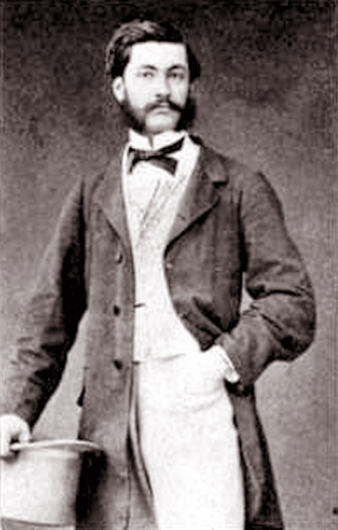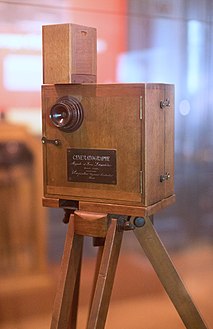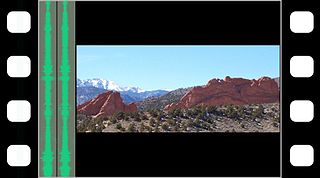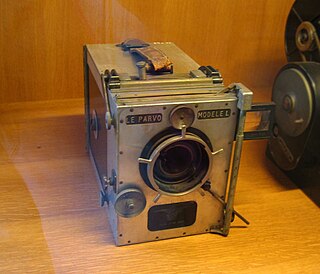Digital cinema refers to the use of digital technology to distribute or project motion pictures as opposed to the historical use of reels of motion picture film, such as 35 mm film. Whereas film reels have to be shipped to movie theaters, a digital movie can be distributed to cinemas in a number of ways: over the Internet or dedicated satellite links, or by sending hard drives or optical discs such as Blu-ray discs. Digital movies are projected using a digital video projector instead of a film projector. Digital cinema is distinct from high-definition television and does not necessarily use traditional television or other traditional high-definition video standards, aspect ratios, or frame rates. In digital cinema, resolutions are represented by the horizontal pixel count, usually 2K or 4K. As digital-cinema technology improved in the early 2010s, most theaters across the world converted to digital video projection.

35 mm film is a film gauge used in filmmaking, and the film standard. In motion pictures that record on film, 35 mm is the most commonly used gauge. The name of the gauge is not a direct measurement, and refers to the nominal width of the 35 mm format photographic film, which consists of strips 1.377 ± 0.001 inches (34.976 ± 0.025 mm) wide. The standard image exposure length on 35 mm for movies is four perforations per frame along both edges, which results in 16 frames per foot of film.
IMAX is a proprietary system of high-resolution cameras, film formats, film projectors, and theaters known for having very large screens with a tall aspect ratio and steep stadium seating.
The movie camera, film camera or cine-camera is a type of photographic camera which takes a rapid sequence of photographs on an image sensor or on a film. In contrast to a still camera, which captures a single snapshot at a time, the movie camera takes a series of images; each image constitutes a "frame". This is accomplished through an intermittent mechanism. The frames are later played back in a movie projector at a specific speed, called the frame rate. While viewing at a particular frame rate, a person's eyes and brain merge the separate pictures to create the illusion of motion.

Louis Aimé Augustin Leprince ; was a French artist and the inventor of an early motion picture camera, the first person to shoot a moving picture sequence using a single lens camera and a strip of (paper) film. Although some have credited him as the "Father of Cinematography", his work did not influence the commercial development of cinema—owing at least in part to the great secrecy surrounding it.

A cinematograph is a motion picture film camera, which — in combination with different parts — also serves as a film projector and printer. It was developed in the 1890s in Lyon by Auguste and Louis Lumière.
Polyvision was the name given by the French film critic Émile Vuillermoz to a specialized widescreen film format devised exclusively for the filming and projection of Abel Gance's 1927 film Napoleon. It involved the simultaneous projection of three reels of silent film arrayed in a horizontal row, making for a total aspect ratio of 4:1 (1.33×3:1). This configuration is considered to be a similar precursor to Cinerama, which would debut a quarter of a century later; however, it is unlikely that Polyvision was a direct inspiration for later widescreen techniques, as the triptych sequence of Napoleon was cut from the film by its distributors after only a few screenings and was not seen again until Kevin Brownlow compiled his restorations from the 1970s onwards.

Bernard Natan was a Franco-Romanian film entrepreneur, director and actor of the 1920s and 1930s. He was once said by historians to be one of the earliest pornographic film directors and porn stars, although there is now considerable doubt about this. Natan certainly worked in mainstream cinema from his youngest days, working his way up from projectionist and chemist to cinematographer and producer. He eventually acquired the giant French motion picture studio Pathé in 1929. Pathé collapsed in 1935, and Natan was convicted of fraud. However, he laid the foundation for the modern film industry in France and helped revolutionize film technology around the world. Natan died after being transported to Auschwitz concentration camp.

Hand-held camera or hand-held shooting is a filmmaking and video production technique in which a camera is held in the camera operator's hands as opposed to being mounted on a tripod or other base. Hand-held cameras are used because they are conveniently sized for travel and because they allow greater freedom of motion during filming. Newsreel camera operators frequently gathered images using a hand-held camera. Virtually all modern video cameras are small enough for hand-held use, but many professional video cameras are designed specifically for hand-held use such as for electronic news-gathering (ENG), and electronic field production (EFP).
In film theory, the term oneiric refers to the depiction of dream-like states or to the use of the metaphor of a dream or the dream-state in the analysis of a film.

The Krugovaya Kinopanorama or Circular Kinopanorama - is a cinema in Moscow of Russia which plays Krugorama, a type of cinema presentation in which film is projected on a circular screen with a horizontal 360° view. This was pioneered in 1896 by French engineer Raoul Grimoin-Sanson, who played ten projectors simultaneously on a circular screen, a process he called Cinéorama. Cinerama though spelled similarly has a different meaning, and denotes three projectors on an arched screen, as does Kinopanorama. The technology used in the Moscow Circular Kinopanorama was also previously carried out by Walt Disney in 1955, in a process he called Circarama.

Anamorphic format is the cinematography technique of shooting a widescreen picture on standard 35 mm film or other visual recording media with a non-widescreen native aspect ratio. It also refers to the projection format in which a distorted image is "stretched" by an anamorphic projection lens to recreate the original aspect ratio on the viewing screen. The word anamorphic and its derivatives stem from the Greek anamorphoun, compound of morphé with the prefix aná. In the late 1990s and 2000s, anamorphic lost popularity in comparison to "flat" formats such as Super 35 with the advent of digital intermediates; however in the years since digital cinema cameras and projectors have become commonplace, anamorphic has experienced a considerable resurgence of popularity, due in large part to the higher base ISO sensitivity of digital sensors, which facilitates shooting at smaller apertures.
The Gaumont-British Picture Corporation produced and distributed films and operated a cinema chain in the United Kingdom. It was established as an offshoot of the Gaumont Film Company of France.

The Parvo was a 35mm motion picture camera developed in France by André Debrie. The patent was registered in 1908 by his father, Joseph Dules Debrie. The camera was relatively compact for its time. It was hand-cranked, as were its predecessors. To aid the camera operator in cranking at the correct speed, the camera had a built in tachometer.

Film, also called movie, motion picture or moving picture, is a visual art-form used to simulate experiences that communicate ideas, stories, perceptions, feelings, beauty, or atmosphere through the use of moving images. These images are generally accompanied by sound, and more rarely, other sensory stimulations. The word "cinema," short for cinematography, is often used to refer to filmmaking and the film industry, and to the art form that is the result of it.

A projector or image projector is an optical device that projects an image onto a surface, commonly a projection screen. Most projectors create an image by shining a light through a small transparent lens, but some newer types of projectors can project the image directly, by using lasers. A virtual retinal display, or retinal projector, is a projector that projects an image directly on the retina instead of using an external projection screen.

The history of film technology traces the development of techniques for the recording, construction and presentation of motion pictures. When the film medium came about in the 19th century, there already was a centuries old tradition of screening moving images through shadow play and the magic lantern that were very popular with audiences in many parts of the world. Especially the magic lantern influenced much of the projection technology, exhibition practices and cultural implementation of film. Between 1825 and 1840, the relevant technologies of stroboscopic animation, photography and stereoscopy were introduced. For much of the rest of the century, many engineers and inventors tried to combine all these new technologies and the much older technique of projection to create a complete illusion or a complete documentation of reality. Colour photography was usually included in these ambitions and the introduction of the phonograph seemed to promise the addition of synchronized sound recordings. Between 1887 to 1894, the first successful short cinematographic presentations were established. The biggest popular breakthrough of the technology came in 1895 with the first projected movies that lasted longer than 10 seconds. Initially, motion pictures lasted about 50 seconds, lacked synchronized sound and natural colour, and were mainly exhibited as novelty attractions. During the 20th century, movies grew much longer and the medium quickly developed into one of the most important tools of communication and entertainment. The breakthrough of synchronized sound occurred at the end of the 1920s and that of full color motion picture film in the 1930s. By the start of the 21st century, physical film stock was being replaced with digital film technologies at both ends of the production chain by digital image sensors and projectors.
Joseph Jules Debrie was a French manufacturer of cinema camera and projectors, who founded Debrie.
André Victor Léon Clément Debrie was a French manufacturer of cinema cameras, and head of Debrie from 1919.










